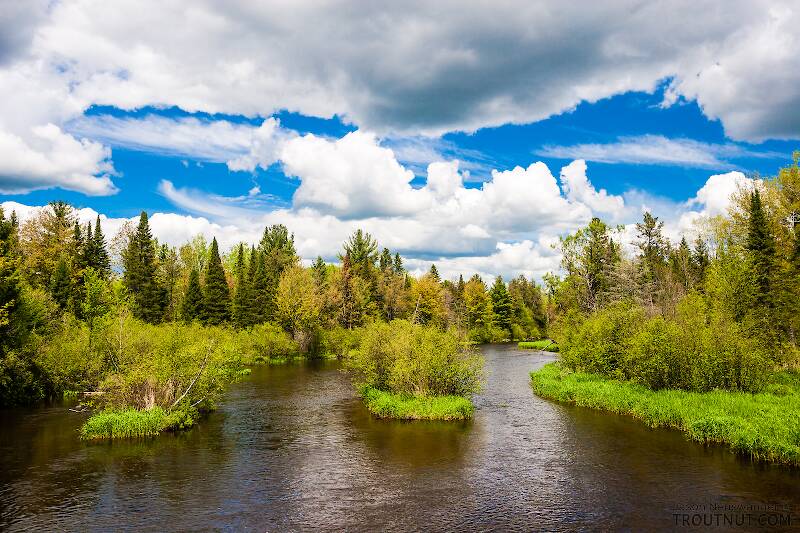
Blue-winged Olives
Baetis
Tiny Baetis mayflies are perhaps the most commonly encountered and imitated by anglers on all American trout streams due to their great abundance, widespread distribution, and trout-friendly emergence habits.
Featured on the forum

Some characteristics from the microscope images for the tentative species id: The postero-lateral projections are found only on segment 9, not segment 8. Based on the key in Jacobus et al. (2014), it appears to key to Neoleptophlebia adoptiva or Neoleptophlebia heteronea, same as this specimen with pretty different abdominal markings. However, distinguishing between those calls for comparing the lengths of the second and third segment of the labial palp, and this one (like the other one) only seems to have two segments. So I'm stuck on them both. It's likely that the fact that they're immature nymphs stymies identification in some important way.

Troutnut is a project started in 2003 by salmonid ecologist Jason "Troutnut" Neuswanger to help anglers and
fly tyers unabashedly embrace the entomological side of the sport. Learn more about Troutnut or
support the project for an enhanced experience here.
Caddisfly Species Nectopsyche albida (White Millers)
This is the most prominent species of Nectopsyche in most northern states nationwide, and it earned the common name "White Miller" for the genus.
Because Nectopsyche albida is nocturnal, is a favorite of late-season night fishermen.
Because Nectopsyche albida is nocturnal, is a favorite of late-season night fishermen.
Where & when
Time of year : Late July to mid-August in the Upper Midwest
In 64 records from GBIF, adults of this species have mostly been collected during June (41%), July (17%), August (17%), May (11%), and September (6%).
In 15 records from GBIF, this species has been collected at elevations ranging from 466 to 4606 ft, with an average (median) of 1112 ft.
Species Range
Egg-Laying behavior
Time of day: Dusk or night
Discussions of Nectopsyche albida
Moved from genus level to N. albida
Posted by Entoman on Jun 15, 2014
Last reply on Jun 15, 2014 by Entoman
It is my understanding that wing maculation is quite distinctive and consistent in this genus thus allowing species identification using this character. This specimen has been at the genus level for many years and somehow slipped through the cracks.;)
White Miller Bug
3 replies
Posted by MIKE54 on May 3, 2013
Last reply on May 4, 2013 by Adirman
Where did the name "White Miller" come from, for the caddis bug in the warm Yellowstone waters? I am not interested in the east coast mayfly with the same name. Thanks, Mike Miller.
Start a Discussion of Nectopsyche albida
References
- Jacobus, L. M., Wiersema, N.A., and Webb, J.M. 2014. Identification of Far Northern and Western North American Mayfly Larvae (Insecta: Ephemeroptera), North of Mexico; Version 2. Joint Aquatic Science meeting, Portland, OR. Unpublished workshop manual. 1-176.
- LaFontaine, Gary. 1981. Caddisflies. The Lyons Press.
Caddisfly Species Nectopsyche albida (White Millers)
Species Range
Common Name
Resources
- NatureServe
- Integrated Taxonomic Information System
- Global Biodiversity Information Facility
- Described by Walker (1852)

